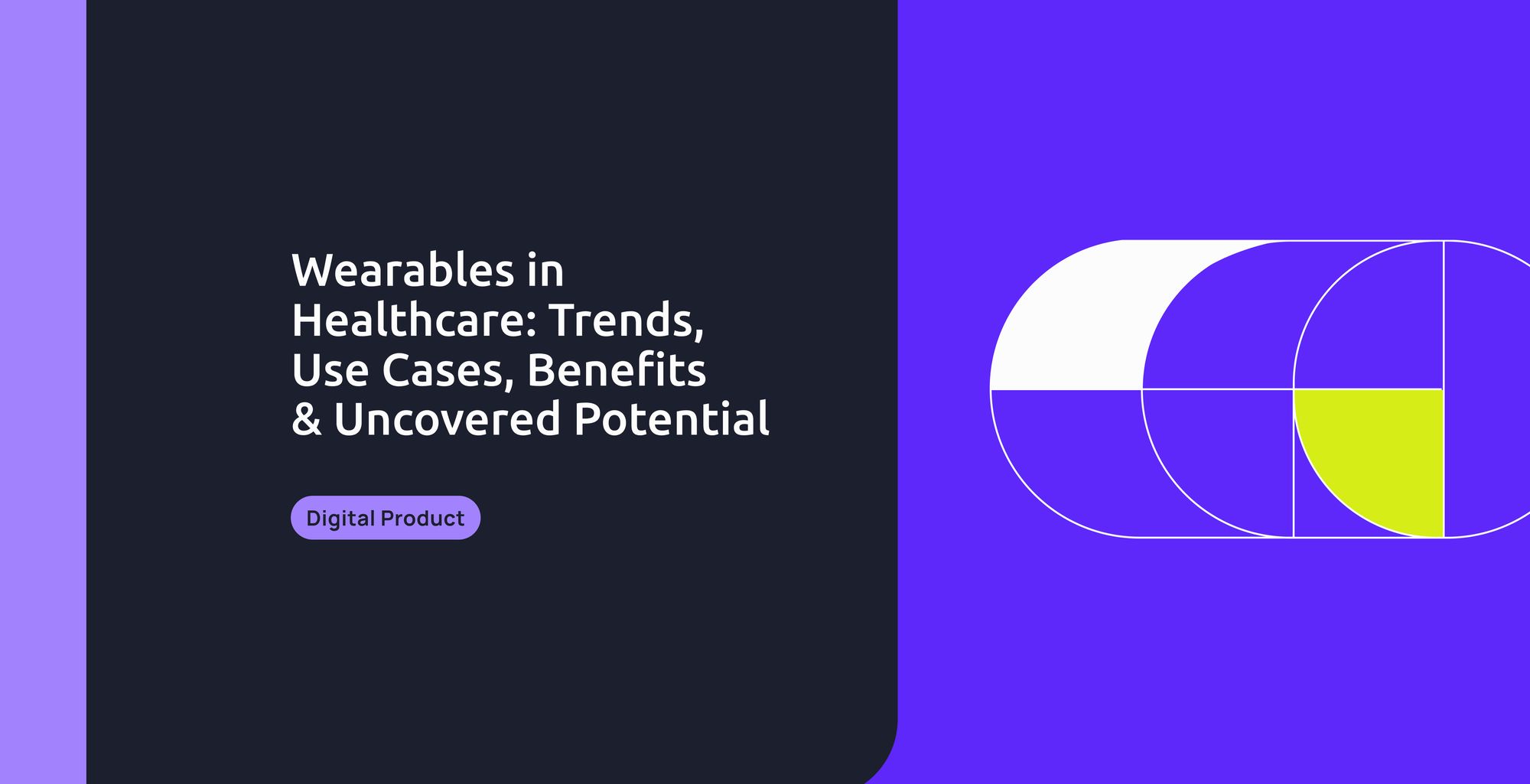How data can optimize digital health products
In the rapidly evolving digital health landscape, data has become the backbone for optimizing innovation and product development. The vast amount of health-related information generated daily — from smartwatches, RPM devices, and mHealth apps — has become an indispensable resource that is fueling the next generation of AI-driven insights, interventions, detections, and health-related analysis. In essence, this data is becoming the lifeblood that powers innovation, efficiency, and personalized care, propelling us into an era where proactive and data-driven solutions are reshaping the future of digital health development.
Realizing the uncovered potential for wearable technology
Wearable technology is already transforming the entire healthcare landscape, with several recommendations pushing to have these measures integrated into clinical workflows. Using the data derived from wearables, the healthcare system can potentially reduce costs and patient readmissions following treatment. Already, estimates project over $200 billion in savings from the healthcare industry simply from patient interactions with these devices.
As wearables contribute to an environment where the patient lives and outcomes are strengthened, the use of monitoring features allows individuals and healthcare providers to observe vital signs while taking early notice of potential health issues. These devices could also reduce the need for in-person visits, a benefit particularly important to patients with chronic conditions that require routine observations and management.
The data regularly gathered by wearable devices can also encourage a proactive approach to well-being by giving valuable insight into behavior and health patterns. Healthcare providers can employ this insight to provide personalized treatment plans to patients. Taken together, these features have the potential to boost early disease detection, patient management, plus personalized treatment, all of which contribute to reduced fees and better end results for the patient.
Trends in using wearables data in healthcare
Since the COVID-19 pandemic, more people have recognized the importance of assessing and measuring health performance remotely. In 2021, around 300 million wearables were shipped — this number is projected to double to over 650 million by 2027. Wearables introduce a new level of personalization to healthcare, enhancing data-gathering for patients and healthcare professionals.
This could very well be the new, compact face of preventative care in medicine. Only two decades ago a diabetic may have required an invasive procedure to plant a glucose sensor to monitor blood sugar levels. With a continuous glucose monitor (CGM), this same patient has a non-invasive alternative for staying on top of glucose levels. This same device eliminates or significantly reduces the need for finger prick tests to determine blood sugar.
Patients are also experiencing new levels of control over their well-being as digital health products continue to progress. Through wearable technology alone, users only need a quick look at their wrist or mobile app to stay updated on blood sugar levels, heart rate, sleep patterns, and other crucial metrics. Coupled with developments in AI, this valuable data grants real-time insight into individual health status and is also a key means of remote patient monitoring for providers and other key health players.
While research is ongoing, AI and machine learning are taking wearables to the next development phase by learning useful patterns. Already, these developments are showing promise in many healthcare settings like elder care, where activity detection is helping to manage health status. Wearables are influencing medical trends and helping widen the accessibility to better healthcare.
How companies can leverage this data
For healthcare developers wanting to access data from their users’ wearable devices, this process usually involves gaining access to the various wearable providers' APIs first, then building out data pipelines, standardizing the data, and maintaining these integrations continuously. Thankfully, solutions like Metriport’s Devices API exist, which allow developers to gain all-in-one access to the most popular wearable devices and mHealth apps in the world today — such as Garmin, Fitbit, Oura, and Apple Health — through a single standardized API integration.
This is why Light-it and Metriport are partnering to bring lightning-fast wearable integrations to healthcare companies looking to leverage this data. Together, Light-it and Metriport are providing a building block and foundation for endless possibilities with development in digital health. Through a simplified and seamless integration process, healthcare companies can get a clearer picture of their patients' health information, improving patient care outcomes.
Get in touch with Light-it or Metriport today to learn how you can leverage the full potential of wearables data in your application.

